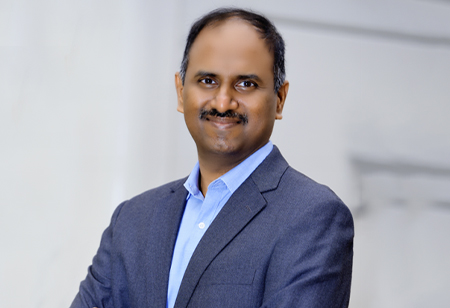
Vijaykrishnan is an experienced industry professional who has been instrumental in crafting efficient business strategies for Kennametal since the time he joined the company in 2020. In a recent conversation with Industry Outlook, Vijaykrishnan shared his thoughts on various aspects relating to the current material science landscape in India.
If you look at the machine tools industry, India is still a net importer, wherein our percentage of local manufacturing is still lower than the number of machines that we import in terms of dollar value. There is a huge opportunity for import substitution in the industry, along with the need to adapt high end technologies such as 5-axis machining. We also have a scope to introduce indigenous solutions, both in high speed machining at par with some of the global leading brands, as well as basic machines in the value-for-money segment. With continued momentum in the manufacturing sector, the demand for machines will continue to grow proportionally, especially in niche applications such as electronics, medical devices, aerospace etc. There will also be a demand for continuous technology upgradation to deliver high quality components, while achieving optimum productivity. Additionally, machine tool builders should focus on localization of machine parts that will make them more competitive and play a crucial role in building a sustainable supply chain.
Currently, we are seeing an increasing adoption of EVs especially in the 2-wheeler segment. In the commercial vehicle segment, there are ongoing discussions about alternative green fuel such as ammonia, hydrogen, etc. All this necessitates the change in the component manufacturing process for various industries. In the case of aerospace industry, India is slated to feature among the top three aviation markets by 2024 as per data published by the India Brand Equity Foundation, propelling the overall Aerospace component manufacturing demand. Various trends such as increasing focus on materials with high strength to weight ratio, parts having complex geometries and tighter machining tolerances are changing the landscape of the machine tool industry.
Today, India is poised to grow at an accelerated rate and become a $7 trillion economy by 2030. Innovation will be a key for Indian machine tool builders to ride this growth trend. We have numerous instances of Japanese and German brands that started off as regional players but eventually became global benchmarks in quality and performance. Being one of the largest consumer bases in the world today, there is a tremendous scope for innovating in India, for India and the world.
Innovation leads to solving today’s problems and maximizing tomorrow’s opportunities, thereby enabling Indian business houses to offer new, unique and differentiated products and solutions. Innovation leads to fast paced growth, both in the domestic and global markets.
At the heart of cutting tools is Tungsten Carbide, which is not abundantly available. One of the key steps that some of the leading players in this space have taken is to come-up with ways to recycle and reuse this material, which can significantly bring down its mining and contribute to a circular economy. Again, innovation needs to happen in building more sustainable machines that are optimum on footprint, water, and power consumption. By focusing on green supply chain in the areas of packaging and logistics, building local capabilities through MSMEs and localizing critical components, the industry can make a paradigm shift in the area of sustainability.
We use cookies to ensure you get the best experience on our website. Read more...